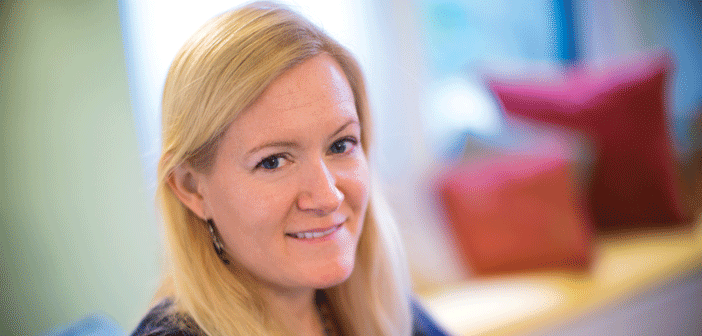In response to the calls—she continues to receive several each week—Britton started a project called the Varieties of Contemplative Experience (VCE), with the idea first of cataloging and coding these reactions and then of publishing papers about them informed by both a humanistic and a scientific point of view. While she has a rich trove of qualitative data, the sample is relatively small. She hopes to develop a questionnaire that can be administered in a large epidemiological sample and use the statistical power to detect relationships between variables. These data could then be used to identify individuals for whom meditation might be contraindicated—or require modifications. People with trauma, for example, who aren’t currently in therapy might benefit from meditations of shorter durations, with eyes open rather than closed, administered on a one-on-one basis rather than in large groups of strangers, or with trauma-specific non-meditation components added.
“We need to create a taxonomy of the full range of experiences, both positive and negative, that can be produced by meditation, figure out what factors influence what types of experiences a given person might have, and then determine the best methods of managing or supporting these different experiences,” Britton says. “In the future, these data will be available as part of the process of informed consent, when a person who wants to learn to meditate is informed of all the possible effects so they can make the best decision about whether to start.”
Britton’s team has recorded interviews with 60 practitioners and 40 teachers; they have delineated six main categories of experience—cognition, perception, body, sense of self, affect, and social changes—and 41 subcategories. They are still in the process of coding the entire set of experiences but have already published a paper, in Frontiers in Psychology, on one aspect, meditation-induced light experiences. These visual hallucinations— points or patterns of light, or changes in the visual field—are documented both by current practitioners and in Buddhist literature. The paper’s first author, Jared Lindahl, PhD, is a visiting scholar at Brown’s Cogut Center for the Humanities who specializes in Buddhist studies and the cognitive science of religion, and who codirects the VCE project with Britton.
Surprisingly, it is not clear who may develop challenging meditation-related experiences. “We’re seeing people that have been meditating 20 years, never had any issues,” Britton says, “and then in year 21 something happens. And we have people who have no psychological issues, no trauma issues, grew up in loving homes, they go on a three-day retreat… and by Sunday afternoon they’re in the hospital.”
Less surprisingly, Britton ruffles feathers in the meditation delivery community, and she has had to work hard to convince the NIH to pay attention to the phenomenon. “What I’m doing is extremely unpopular,” she says. “No one is helping these people. They’re completely on their own. That’s why I’m doing it.”
“I’m a clinical scientist,” she adds, “so my science is always going to be geared toward helping people not suffer. Most of my published papers have been on the beneficial effects of meditation. But if I have data that are speaking to [possible negative effects]then I’m going to disseminate it.”
Cathy Kerr, who has written about the “overhyping” of mindfulness in the mainstream media, applauds Britton. “I think this is something you would see in any newly emerging medical or behavioral therapy,” Kerr says. “I think the dimensions are small compared to [those of] a lot of the medications that people take. But it has to be part of the science.… It is clear that this is not beneficial for 100 percent of people 100 percent of the time. Once you admit that, you have to figure out who it might not be beneficial for. Willoughby’s the first one to take a crack at that.”
On Death and Dying
Britton is still thinking about death. But not in the way you might think.
With Lindahl, she teaches a course called Cross-Cultural Approaches to Death and Dying, which explores not only a wide variety of human responses to this most mysterious phenomenon, but also how one’s cultural context influences one’s views on it. Mitchell Levy, MD, professor of medicine and director of Critical Care Services at Rhode Island Hospital, and Fred Schiffman are lecturers. Britton says the students, who include medical students and pre-meds, are “very interested in death-related ethical dilemmas. All I can do is hold the door open for discussion.”
Thinking about death also constitutes part of her current meditation practice. She spends part of each day “reflecting on the fact that we’re going to die,” she says. “Everyone is. That changes a lot. Just remembering that, you’re nicer to people. You’re not as stressed out about stupid things. You just keep a much larger perspective. It’s made me more patient, and I have a general sense of warmth and compassion.
“We’re these strange creatures that have these short lives and we run around and don’t know what we’re doing and we don’t know for how long. Each interaction is pretty precious. To have that kind of frame … that’s a practice. There’s no cushion.”


